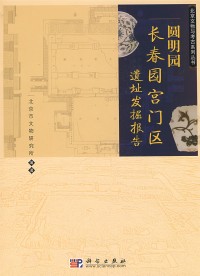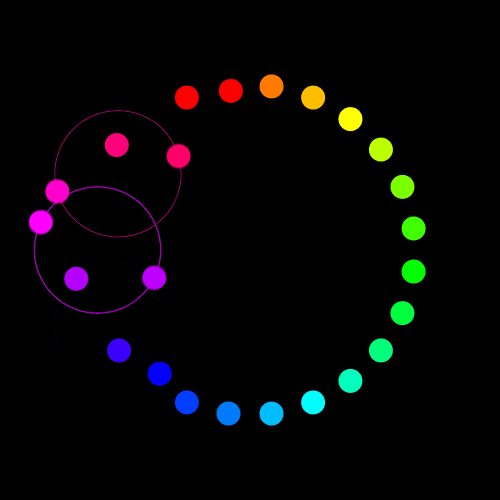
微信扫一扫,移动浏览光盘
简介
Commissioned by the Beijing Municipal Administration of
Cultural Heritage, the Research Institute of Cultural Heritage of
Beijing (RICHB) executed a survey of the relics of Yuanmingyuan (
Garden of Perfect Splendor) from October to November in 2000, and
drafted the initial plan of archaeological excavation. Authorized
by China National Adminstration of Cultural Heritage, the
Yuanmingyuan Arehaeological Team of RICHB carried out staged
scientific excavations in the relics of the gate area of
Changchunyuan (Garden of Eternal Spring) of Yuanmingyuan in 2001,
2003 and 2004 respectively. The Report provides a comprehensive
summary of progress registered during the afore-mentioned
excavations.
Changchunyuan is a royal garden built by Emperor Qianlong of
the Qing Dynasty for his activities during sparetime and after
retirement. In October 1860, Changehunyuan, along with
Yuanmingyuan and Yichunyuan ( Garden of Blossoming Spring)
suffered babarian looting by the Anglo-Freneh forees and was
burned down to the ground. Changchunyuan has become a site of
ruins before the excavation. With most of the site laid ashes and
base parts or minor traces of the buildings visible, the relics
of the gate area suffered most serious damage.
Located south of Changchunyuan, the gate area tops all other
gardens in terms of scenic beauty. With its total space totalling
21,000m2, the excavation site runs 220 metres from south to
north, 90 metres from east to west and eovers 210 excavation
spots, each of which with the size of 10 ~ 10. The relics can be
divided into the South Zone and North Zone demarkated along the
gate and the walls to its east and west. A total of 24 building
relics are unearthed in the North and South zones. 11 of the
relics are located in the South zone and include gate, walls and
such auxiliary buildings as the Left Gate, Right Gate, the East
duty post. In addition, the unearthed also include the relics of
the East and West Chaofang ( Waiting Lounge) in front of the
Plaza, corridor resembling "?" (the Chinese character for 10) ,
the South screen wall, underground drainage pipelines and the
early building sites. Among the other 13 relics unearthed in the
North zone, there are the gate to Pailou (decorated archway) and
its auxiliary buildings as court walls, the gate on the east
corner, relics of the corridor connecting the gate to Pailou and
the gate to Changchunyuan, the great hall of Danhuaitang, and
such building relics in the front court as the East and West side
halls, winding corridor, corridor resembling "?", the Zhongle
Pavilion in the North, and the underground drainage pipelines to
the east and west sides of the court of Danhuaitang.
According to Historical Facts based on the Archives of Qing
Dynasty, the timing of the start of the construction of the
composite buildings in the gate area of the Changchunyuan is not
later than 1745, which corresponds with that of the construction
of the gar- den. Accordingly, the approximate closing year of
construction is 1747, since by September 16th of the year, the
board inscribed with the name of the garden, which is an
autograph by Emperor Qianlong, has been hung on the lintel of the
gate to the garden. The episode marks the conclusion of the
construction of the gate area and its readiness for use.
Excavation demonstrates that the buildings in the gate area
of Changchunyuan follows strictly the principle of symmetry. A
north-south axis, which centered on the gate to the garden, is
included in the original design. The axis starts from the screen
wall in the south, runs north across the gate to the garden, the
gate to Pailou, the great hall of Danhuaitang and fnally reaches
the Zhongle Pavilion in the north tip. All other auxiliary
buildings are located to the east and west sides of the axis and
form a symmetry henceforth.
The excavation is the first planned mission for archaelogical
and protection purposes by the Chinese Government ever since the
barbarian looting and destruction of Yuanmingyuan by the Anglo-
French in October 1860. The excavation thoroughly defined the
lay-out of construction and composition characteristics of the
gate area of Changchunyuan, and hence gained firsthand material.
The above achievement provides for authentic and reliable
material support for the drafting and implementation of the Plan
of Reconstruction and Protection of the Gate Area of
Changchunyuan in 2008, while fully attests to the signficance and
scientific value of the excavation vis-a-vis the protection of
relies.
A comparative study of the excavation of the relics of the
gate area of Changchunyuan and the Measured Lay-out Map of Relies
of Yuanmingyuan and Changchunyuan (scale 1:2000 ) published by
the Beiping Municipal Administration of Public Affairs and Civil
Engineering in 1933 shows that this latest archaeological
excavation fills up 15 blanks in the foregoing Map, the most
significant of which is the discovery of the underground drainage
pipeline systems to the east and west sides of the court of
Danhuaitang and in the southern part of the gate plaza.
Conclusion can be drawn based on the discovery that comprehensive
and elaborate planning and design has been carried out before the
initiation of construction of Changchunyuan and the buildings in
its gate area.
The burned, reddish and brittle relics of the ground bricks
in the north part of the platform surface of Danhuaitang
constitute undoubtedly piece of material evidence that the Anglo
-French troops committed barbarian plundering and burned down the
three gardens of Yuangmingyuan.
It is safe to say that the excavation of the relics of the
gate area of Changchunyuan and the project of reconstruction and
protection executed in 2008 in the gate area of Changchunyuan
constitute both an innovative trial in terms of the protection
and harnessing of the relics of Yuanmingyuan, and accumumlation
of experimental experiences, and will have important and positive
bearing on the future protection of the relics of Yuangmingyuan.
目录
绪论
第一章 遗址概况与发掘经过
第一节关于长春园的修建
第二节历史上长春园宫门区的建筑布局
第三节遗址发掘前的现状
第四节发掘经过
第二章 分区、布方与地层堆积
第一节 分区和布方
一、分区
二、布方
第二节 地层堆积
第三章 建筑遗迹
第一节 南区
一、宫门遗迹
二、宫墙及附属建筑遗迹
三、广场上的建筑遗迹
第二节 北区
一、牌楼门及附属建筑遗迹
二、澹怀堂庭院遗迹
三、众乐亭遗迹
四、澹怀堂庭院东、西两侧的地下排水道遗迹
第四章 遗物
第一节 汉白玉件
第二节 青石件
第三节 砖瓦件
第四节 瓷器
一、青花
二、青花釉里红
三、杂釉彩
四、粉彩
五、五彩
六、单色釉
第五章 结语
英文提要
后记
第一章 遗址概况与发掘经过
第一节关于长春园的修建
第二节历史上长春园宫门区的建筑布局
第三节遗址发掘前的现状
第四节发掘经过
第二章 分区、布方与地层堆积
第一节 分区和布方
一、分区
二、布方
第二节 地层堆积
第三章 建筑遗迹
第一节 南区
一、宫门遗迹
二、宫墙及附属建筑遗迹
三、广场上的建筑遗迹
第二节 北区
一、牌楼门及附属建筑遗迹
二、澹怀堂庭院遗迹
三、众乐亭遗迹
四、澹怀堂庭院东、西两侧的地下排水道遗迹
第四章 遗物
第一节 汉白玉件
第二节 青石件
第三节 砖瓦件
第四节 瓷器
一、青花
二、青花釉里红
三、杂釉彩
四、粉彩
五、五彩
六、单色釉
第五章 结语
英文提要
后记
圆明园长春园宫门区遗址发掘报告
- 名称
- 类型
- 大小
光盘服务联系方式: 020-38250260 客服QQ:4006604884
云图客服:
用户发送的提问,这种方式就需要有位在线客服来回答用户的问题,这种 就属于对话式的,问题是这种提问是否需要用户登录才能提问
Video Player
×
Audio Player
×
pdf Player
×


